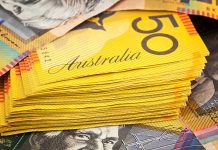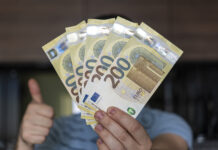Markets
US and European yields yesterday continued the bottoming out process that started earlier this week as investors are counting down to next week’s Fed and ECB policy meetings. The US Q4 GDP report was somewhat of a mixed bag. Headline growth decelerated less than expected printing at 2.9% Q/Qa from 3.2%. However with moderate consumption growth (2.1%) and a big contribution to growth from inventories, the overall picture was softer than the headline suggests. The core PCE deflator eased from 4.7% to 3.9% as expected. After all, the report can be seen as going in the direction of the soft landing the Fed is aiming for. US (headline) durable goods were strong (5.6%) due to aircraft orders. Another sub 200k figure for the weekly jobless claims confirmed a tight labour market. At least for now, data suggest that activity can cope rather well with interest rate normalization. In this respect, yesterday’s data mix translated into a modest further rise in yields with at the same time a solid equity performance. German yields gained between 5.4 bps (30-y) and 6.2 bps (5-y). US yields added between 5.75 bps (2-y) and 4.6 bps (30-y). The intraday uptrend in US yields was briefly interrupted by a stellar US $35 bln 7-y Treasury auction, awarded at a yield of more than 2 bps below the WI price and a record low primary dealer award. However, the uptrend soon resumed. Higher yields this time did go hand-in-hand with solid equity gains (S&P 500+ 1.1%; Nasdaq +1.76%). Europe underperformed (Eurostoxx50 +0.62%). The combination of higher yields and equities finally also played out in favour of the dollar. EUR/USD closed below 1.09 (1.0892). No test of the key 1.0942 resistance for now. USD/JPY closed north of the 130 barrier (130.22). Sterling again outperformed the euro with EUR/GBP closing at 0.877 despite soft CBI retail data.
This morning, Asian equities mostly trade with modest gains, with India the exception to the rule. US yields are rising another 1/3 bps. The dollar gains modestly (DXY 101.9, EUR/USD 1.0875). The yen slightly outperforms (USD/JPY 129.9) after higher than expected January Tokyo inflation (see infra).
Today, there are few data in EMU. In the US, December personal income and spending data, annex price deflators will be published. However, the report won’t bring much of a surprise anymore after yesterday’s Q4 GDP release. So, we expect order driven/technical trade going into the weekend. Yields apparently found a ST bottom. Maybe there is some room for interest rate markets to narrow the gap between market pricing and much more hawkish CB guidance going into next week’s Fed and ECB meetings. The dollar decline is also losing momentum. In case of a further correction, EUR/USD 1.0767 is a first ST support on the charts.
News and views
Inflation in Tokyo, a precursor for the nationwide figure due less than a month later, hit a fresh four-decade high in January. Headline inflation accelerated from 3.9% to 4.4%. Core price growth also quickened, from 3.9% to 4.3% (ex. fresh food) and from 2.7% to 3% (ex. fresh food and energy). Just yesterday, the IMF warned the Bank of Japan if significant upside inflation risks were to materialize, it may bring back intense market pressures on the central bank and its YCC programme. But today’s market reaction to the numbers is extremely muted. The 10y yield if anything eases a bit. The Japanese government’s January subsidies to lower gas and electricity cost burdens could play a role. This will affect inflation from next month on with some estimating core CPI 0.7 ppts lower this quarter. It may however boost demand pull inflation further out. The yen appreciates marginally. USD/JPY struggles not to lose 130.
Hungary’s economy minister Nagy yesterday said the central bank’s (MNB) hesitation to lower borrowing costs is unwarranted since it is priced in by markets anyway. The MNB has a shadow policy rate of 18% to dampen high inflation and intends to keep it there until there is a “trend-like improvement in risk perceptions”. The MNB doesn’t want a third repeat of signaling the end of the tightening cycle and risk another rout in the forint. But according to Nagy, a former MNB deputy-governor, this would not be the case this time around since the central bank would simply follow the market. He projected price growth to peak a little over 25% in January and he sees annual GDP growth of 1.5% this year. The forint underperformed regional peers yesterday with EUR/HUF rebounding from an 8-month low at 386.3 to 387.95.












